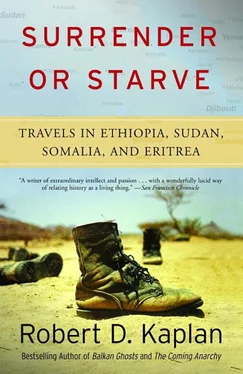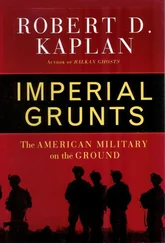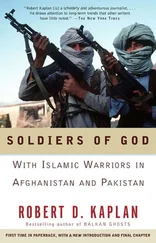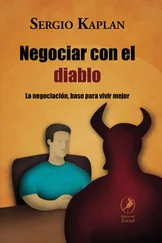On February 22, 1987, more than a year after Ethiopia had faded from the news, a momentous world event took place that was little written about: Ethiopia formally became a Marxist state, the People’s Democratic Republic of Ethiopia, with a Marxist party as the “guiding force.” This was no mere window dressing. Ethiopia, black Africa’s most strategically located and second most populous country, had in almost every conceivable way adopted the Soviet model, the first country on the continent ever to do so. The Coptic Orthodox church had been suppressed and co-opted, in the manner of other orthodox churches in communist states in the Balkans and in the USSR itself. A great mass of peasants had been forcibly collectivized; the Soviet Union had been provided with major military bases; and the wheels of the state machinery, including the party, the security apparatus, and the crucial ministries, had been integrated into the Eastern bloc network. The other African states that were pro-Soviet, Angola and Mozambique, had gone through no such experience, nor even—to such an intense degree—had Nicaragua.
It was a thirteen-year process, beginning with the overthrow of Emperor Haile Selassie in 1974. But the revolution that brought a Marxist-inclined regime to power didn’t end until 1978, and only in late 1984, on the eve of the famine emergency, was a communist party, the Workers’ Party of Ethiopia, officially formed. The brief period in 1984 and 1985 during which the U.S. media maintained an intense interest in Ethiopia corresponded with the most critical phase of this operation.
Outside of the Warsaw Pact, only a handful of countries in the world have ever implemented Soviet-style communism. It is a rare, strategically pivotal event anywhere, and in Africa it was unprecedented. In every place where Soviet communism has been instituted, the cost in human suffering has been immense, with famine often the result—whether it be in the Ukraine, Cambodia, or northern Ethiopia. But this was the first time that the U.S. media were there in such force when the conversion to communism actually was taking place. Yet this history was not recorded in the pages of U.S. newspapers to nearly the extent that it should have been.
In the middle and late 1970s, Ethiopia was a big story around the world. Haile Selassie was overthrown, a bloody revolution ensued, the USSR moved in, the United States moved out, Somalia invaded, the province of Tigre rose in revolt, and the guerrilla movement in Eritrea mushroomed overnight. Journalists poured into the region. Eventually, the media tired of the story. Then the Iranian revolution and the Soviet invasion of Afghanistan completely wiped Ethiopia off the world news map. But the fighting in northern Ethiopia continued unabated. Almost every year in the early 1980s, the Addis Ababa government launched a fresh offensive against the guerrillas; two of those offensives were even bigger than the late 1970s offensives the media had covered in force. War was destroying the land and the peasants on it, and the drought and Marxist agricultural policies were only making the situation worse. A famine resulted in 1984, bringing droves of journalists back to Ethiopia for the first time in six years. The famine and the drought were reported in depth. The rest was largely forgotten. The linkage between the headlines in the 1970s and those of the 1980s was never made.
A problem for all the networks was that they couldn’t cover what they couldn’t film. The war was off limits, unless one was willing to enter Ethiopia from a place like Gedaref. Although tens of thousands of people later were reported to have died as a consequence of the Ethiopian government’s resettlement policies, television barely investigated the issue because, with the exception of rare visits to “showcase” camps, cameras were not allowed into the resettlement area. The famine aside, the Ethiopian government probably was responsible for fifty times more deaths of black Africans in the 1984–1985 period than were South African security forces. But the media were much less aggressive toward the regime in Addis Ababa than toward the regime in Pretoria. Another factor was that Mengistu, far more so than South African president P. W. Botha, made himself practically inaccessible to Western television cameras. Botha, with his bluff, ox-like visage bespeaking all the insufferable, uncompromising qualities of the Afrikaner burgher, offered a perfect target for U.S. political cartoonists. But, because the crimes of the Ethiopian regime could not be identified closely enough with any particular face or personality, in the minds of U.S. viewers the evil became abstract and outside the realm of human accountability. In every facet of policy, Mengistu, unlike the embattled South African leader, really was uncompromising; the high stone wall around the palace in Addis Ababa was literal as well as figurative and constituted a barrier too formidable for the media to scale.
As media coverage of the Ethiopian famine wound down in mid 1985, the Ethiopian regime was gearing up for the biggest offensive against the guerrillas since the late 1970s. Battalions of T-54 and T-55 tanks and squadrons of MIG-23 fighter bombers were about to engage in a five-month-long carnage in which thousands of soldiers and civilian peasants would be killed, wounded, and displaced. The billion-dollar infusion of Soviet weaponry, which paralleled the billion-plus infusion of Western relief aid, was about to take effect. Large tracts of guerrilla territory would be mopped up, thereby significantly shifting the battle lines for the first time in years and improving the Soviet position in a strategic corner of the world in the months and weeks prior to the Geneva summit. But the world was to know almost nothing.
TWO
The World’s Biggest Forgotten War
Millions of people are being psychologically traumatized, starved and killed in conflicts that are virtually ignored by the media, Congress and the U.S. administration.
—F. Andy Messing, Jr., executive director of the National Defense Council Foundation, writing in the
Los Angeles Times
For years now there had been no country here but the war.
—Michael Herr,
Dispatches
ERITREA: SELF-RELIANCE, LIBERATION, AND WAR
South of the Sudanese border, the Red Sea hills erupt into a chain of sandstone and granite peaks whose eroded, sun-blistered faces, ocher and black, suggest the forbidding surface of a distant planet. It is a natural environment of near-total hostility. Plagues of locusts, grasshoppers, and army worms follow drought. The soil has no absorptive capacity, and within minutes of any rainfall, bucketfuls of water streak in dendritic patterns down the canyon walls and flood the valleys. Later, the mud at the bottom dries and cracks and is filtered back into the air as dust. Anything that might pass for a road is blocked by boulders, torn away from the scarps in the deluge. Mostly acacias grow here, and their scrawny roots and branches do little to anchor the soil or shield against the sun’s glare. The trees are of better value to the yellow weaver-birds who nest in them and to the camels who munch on the inch-long thorns. As one might expect, an aerial reconnaissance of this region would reveal few signs of human habitation. It is only as dusk approaches, when the sky becomes too dark for Ethiopian pilots to maneuver their Soviet-made MIG-23 fighter jets, that these seemingly inhospitable vastnesses come to life.
In the enveloping darkness, the defiles become crowded with people scurrying forth from daytime hiding places. Captured East German water tankers trundle out of acacia patches, and bulldozers begin clearing rocks from the road. The light of the rising moon catches the glint of metal rods, as many of the inhabitants are amputees equipped with crutches and artificial limbs. Fluorescent lights and gas lamps flick on in slate rock bunkers dug into the cliff sides, where workshops begin to operate. Tables, chairs, and other bits of furniture are being forged from ammunition boxes, while the snaps of the boxes are removed to make clasps for machines that wash lumps of black plastic, molded afterward into sandals for guerrilla fighters. Parts of Soviet-made cluster bombs are being converted into truck flywheels. The tips of spent tank shells are punctured to produce rain gauges for desert agricultural stations to the southwest. Wash basins are made out of exploded MIG shells, and the trip wires are cut into strings for kirars, a guitar-like instrument played by the soldiers.
Читать дальше












